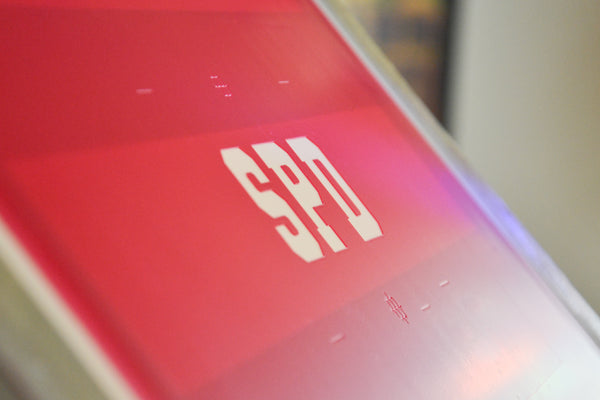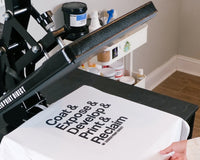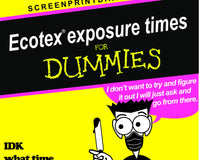Today we take a deep dive into exposure times and what variables affect the amount of time it takes to expose a screen. We know many printers struggle with exposing their screens. Once you read through the list of variables that can affect how your screen exposes you will see how easy it is for something to go wrong. Our hope is that this list of variables can act as a check list the next time you expose a screen and it doesn’t go as planned. Use this list of factors as a guide to ensure you have perfectly exposed screens every time.
Potential variables:
- Emulsion Type: The type and brand of emulsion you use can have a significant impact on exposure time. Different emulsions have varying sensitivity to light. Many manufacturers provide some sort of guideline for how long to expose their emulsion. We highly suggest reading up on your selection emulsion from the manufacture before printing.
- Note: Emulsion that requires the mixture of emulsion ( 2 part emulsions) take longer to expose than ready to use emulsions.
- Emulsion Thickness: The thickness of the emulsion coating on the screen can affect exposure time. Thicker coatings may require longer exposure times. Keep in mind thicker emulsion coatings also require more drying time prior to exposing your screen. If your emulsion is not coated nice and evenly you will have trouble exposing your emulsion. We recommend using a scoop coater for nice and even coats. In the image below you will see a thick layer of emulsion, this was created to print with High Density Plastisol Ink Additive. This is a great example of a screen with a thick layer of emulsion that will take longer to expose.

- Mesh Count: The mesh count of the screen refers to the number of threads per inch. Higher mesh counts may require longer exposure times because there is less open space for light to penetrate.
-
Variable: Mesh Count
- Light Source & Intensity: The type of light source you use for exposure, such as Halogen light or LED light, can affect exposure time. Halogen light takes longer to expose than LED light. Due to the many different light sources, it is important to research your light unit before exposing your emulsion.
- Distance from Light Source: The distance between the light source and the screen can impact exposure time. Closer distances may require shorter exposure times.
- Halftones and Gradients: If your design includes halftones or gradients, the exposure time may need to be adjusted to ensure smooth transitions. You will need to increase the exposure time for these prints in order to capture the detail in the emulsion. See the detail in the image below, this needs to be captured during the exposure process. Cutting the time too short will not allow you to develop the detail accurately.

- Temperature and Humidity: Environmental factors like temperature and humidity can affect emulsion drying and, consequently, exposure times. It is best to keep your dark room where you expose emulsion dry, too much moisture is not good. We recommend keeping humidity under 40%.
- Age and Condition of Emulsion: Old emulsion that may be expired will not expose right and should be thrown out. Emulsion that has been exposed to light prior to the exposure process should also be thrown out.
Pro Tip: When exposing emulsion, we highly recommend using a 21 Step Wedge Calculator to dial in correct exposure time. This will significantly help the trial-and-error process when working with a new emulsion or a new exposure light. Check out this blog post to learn more about step wedge’s and why you should use one when working with new emulsion or exposure lights.
Having trouble exposing your emulsion and not sure where to start? We have emulsions and light units that make exposing easy for beginners. Here are our product recommendations.
If you are using plastisol ink only: We recommend Tex Red Emulsion
If you are using water-based ink only: We recommend WR Blue Emulsion
If you are using plastisol and water-based inks: We recommend PWR Emulsion
For all ink and emulsion types we recommend our UV LED Exposure Unit
Leave a comment below or contact us at info@screenprintdirect.com for assistance. We love to help :)
Happy Printing,
Screen Print Direct







